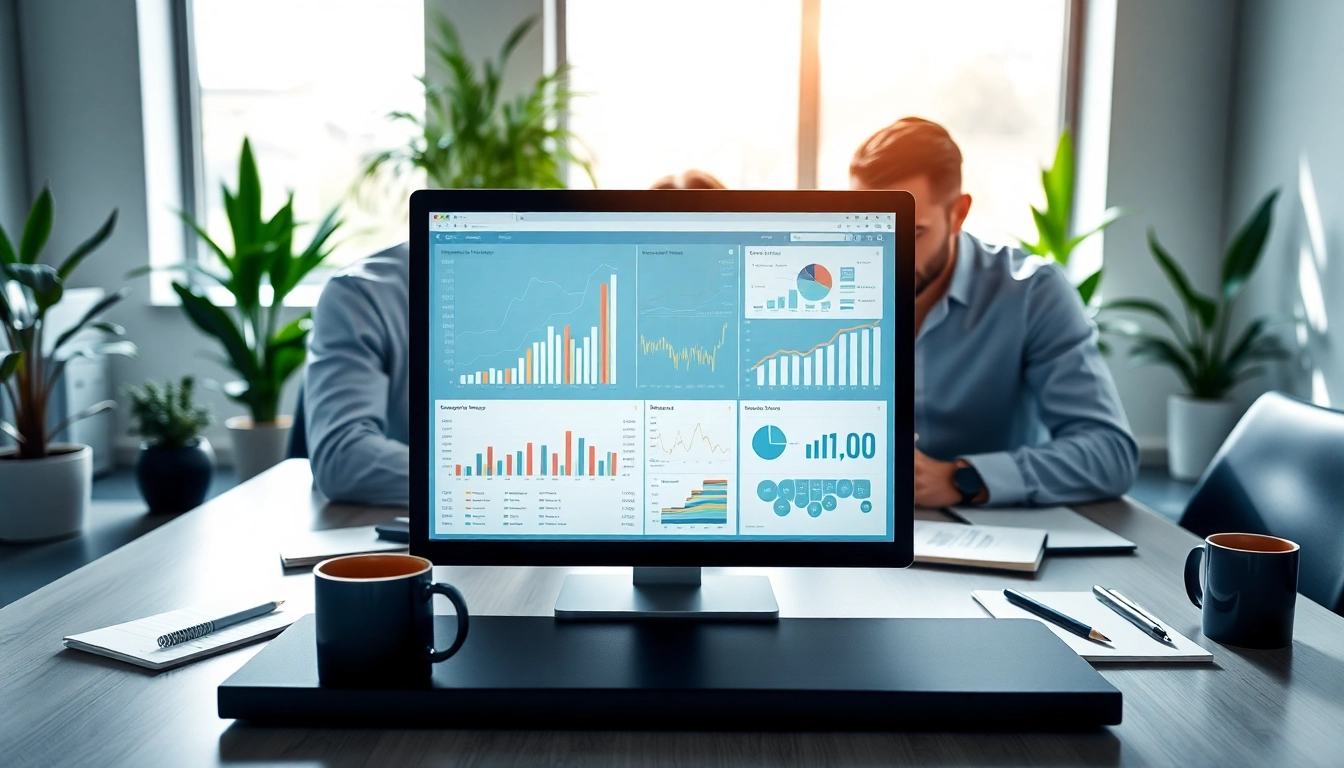Introduction to AI for Competitor Analysis
In the rapidly evolving business landscape, understanding your competition is crucial to maintaining a competitive edge. Traditional methods of competitor analysis often involve tedious manual research, extensive spreadsheets, and a lot of guesswork. However, with the advancement of technology, particularly artificial intelligence (AI), businesses can conduct competitor analysis more efficiently and effectively. AI facilitates data collection and analysis, helps identify market trends, and uncovers insights previously hidden in vast amounts of data. AI for competitor analysis empowers organizations to make informed decisions, optimize strategies, and promote growth.
Understanding the Basics of Competitor Analysis
Competitor analysis involves identifying direct and indirect competitors in the market and assessing their strengths and weaknesses. This process helps businesses understand how they position themselves in their industry relative to others, thereby informing marketing strategies, product development, and sales approaches.
Competitor analysis can be performed in several ways, including:
- SWOT Analysis: Analyzing competitors’ Strengths, Weaknesses, Opportunities, and Threats.
- Benchmarking: Comparing performance metrics against competitors.
- Market Segmentation: Understanding target audiences and their preferences across competitors.
The insights gained from competitor analysis are invaluable, informing strategic business decisions, and allowing companies to effectively respond to market demands and competitor actions.
The Role of AI in Modern Analysis
AI’s integration into competitor analysis transforms how businesses gather and process data. Traditional methods are often limited by time and resource constraints, while AI enhances capabilities in several ways:
- Data Collection: AI automates the collection of large data sets from various sources, such as websites, social media, and industry reports.
- Insights Generation: Advanced algorithms analyze data patterns, revealing actionable insights that human analysts might miss.
- Real-time Monitoring: AI tools can provide continuous tracking of competitors’ activities, alerting businesses to new developments instantly.
- Predictive Analysis: AI models can forecast future trends based on historical data, empowering businesses to make proactive decisions.
Benefits of Using AI for Competitive Insights
Leveraging AI in competitor analysis offers several advantages:
- Increased Efficiency: AI tools significantly reduce the time spent on data collection, allowing teams to focus on strategic tasks.
- Enhanced Accuracy: Automated data analysis minimizes human error, leading to more reliable insights.
- Cost-Effectiveness: By reducing the need for extensive manual labor, AI can lower operational costs related to competitor analysis.
- Better Decision-Making: With comprehensive and detailed insights, businesses can make informed choices that align with their strategic goals.
Essential AI Tools for Competitor Analysis
Top AI Tools to Consider for Your Strategy
As the market for AI tools continues to grow, numerous solutions are available to assist in competitor analysis. Here are some of the top tools:
- Competely: An AI tool that provides instant competitive insights, allowing users to analyze competitors’ strategies quickly.
- Crayon: This tool captures competitive intelligence automatically, providing alerts for significant changes in the market.
- ChatGPT: Useful for generating insights and reports based on competitor data, ChatGPT can interpret large volumes of text data for meaningful conclusions.
- Datagrid: This platform simplifies data integration, enhancing decision-making processes through AI-powered insights.
- Sembly AI: A comprehensive AI solution that offers various features for competitor analysis, including market tracking and brand mentions.
Comparing Features and Usability of Leading Solutions
When selecting an AI tool for competitor analysis, it’s vital to compare their features:
| Tool | Key Features | Usability |
|---|---|---|
| Competely | Instant insights, competitive tracking | User-friendly interface |
| Crayon | Automated competitive intelligence, alerts | Easy to integrate with existing systems |
| ChatGPT | Natural language processing, data summarization | Requires basic prompt engineering skills |
| Datagrid | Data integration, visualization | Clear dashboard for easy analysis |
| Sembly AI | Market insights, brand tracking | Intuitive and straightforward setup |
How to Choose the Right AI Tool for Your Needs
Choosing the right AI tool for competitor analysis depends on several factors:
- Specific Needs: Determine what you want to achieve with competitor analysis and look for tools that specifically address those needs.
- Budget: Consider the costs associated with different tools and choose one that provides the best value for your investment.
- User Experience: Opt for tools with interfaces that your team can navigate efficiently.
- Integration Capabilities: Ensure that the tool can be seamlessly integrated into your existing systems for streamlined operations.
Implementing AI for Competitor Insights
Step-by-Step Guide to Integrating AI Tools
Implementing AI tools for competitor analysis involves several key steps:
- Identify Objectives: Clearly outline what you aim to achieve with AI tools.
- Select the Right Tool: Based on your earlier comparison, choose an AI tool that fits your objectives.
- Gather Data: Use the selected tool to collect data from various sources about your competitors.
- Analyze Data: Utilize the AI tool’s features to derive insights from the collected data.
- Report Findings: Compile the insights into a report that can be shared with stakeholders.
- Review and Adjust: Continuously evaluate the effectiveness of your AI tool and adjust your strategy as necessary.
Best Practices for Data Accuracy and Relevance
To ensure the insights gained from AI tools are accurate and relevant, follow these best practices:
- Ensure data sources are reputable and relevant.
- Regularly update your data collections to reflect current market conditions.
- Utilize AI capabilities to filter out noise and focus on significant trends and insights.
- Engage with domain experts to validate the findings produced by AI tools.
Case Studies of Successful Implementation
Several companies have successfully utilized AI for competitor analysis:
For example, a leading B2B tech firm integrated AI tools to enhance their sales enablement processes. By automating competitor data collection, they reduced the time spent on manual analysis by over 50%, allowing their sales team to focus on customer engagement strategies. Similarly, a retail company employed AI-driven analysis to track market trends and align their inventory strategies accordingly, resulting in a 20% increase in sales over six months.
Challenges in AI-Driven Competitor Analysis
Common Pitfalls and How to Avoid Them
While using AI for competitor analysis brings numerous benefits, it is not without challenges. Common pitfalls include:
- Over-Reliance on AI: While AI can provide insights, it’s essential to combine this analysis with human expertise for a more nuanced understanding.
- Data Overload: AI can generate vast amounts of data, which may lead to confusion. Establish a clear strategy for filtering this data.
- Ignoring n=1 Cases: Focus too much on trends can lead to failure to recognize individual competitor actions that may significantly impact your strategy.
Managing Data Privacy and Ethical Considerations
As businesses increasingly rely on AI tools, managing data privacy and ethical concerns is paramount. Organizations must ensure compliance with regulations such as GDPR and CCPA while handling competitor data. This involves adopting practices that protect sensitive information and establishing clear guidelines for ethical data use in competitor analysis.
Overcoming Resistance to Change in Organizations
Resistance to adopting AI tools for competitor analysis often stems from fear of change or a lack of understanding. To combat this:
- Educate Staff: Provide training sessions to demystify AI tools and highlight their benefits.
- Promote Culture of Innovation: Encourage an organizational culture where experimentation and new technologies are embraced.
- Showcase Success Stories: Share examples of how similar organizations have benefited from integrating AI tools into their analysis processes.
Measuring Success and Performance with AI
Key Metrics to Track Your Analysis Efficiency
To measure the success of your AI-driven competitor analysis, consider tracking the following metrics:
- Time Saved: Assess how much time is saved by using AI tools compared to traditional methods.
- Insight Utilization: Measure how often insights gained from AI tools are utilized in strategic decision-making.
- Return on Investment (ROI): Evaluate the value generated from insights in terms of increased sales or reduced costs against the investment in AI tools.
Assessing the Impact of Insights on Business Strategy
To truly understand the impact of AI-driven insights, establish a framework for tracking changes in your business strategy post-implementation:
- Set clear business objectives related to competitor analysis.
- Measure performance before and after the adoption of AI tools.
- Conduct regular reviews to assess how insights affect strategy.
- Use feedback from teams to iterate and improve the usage of AI tools.
Future Trends in AI for Competitor Analysis
The future of AI in competitor analysis is promising, with trends pointing towards:
- Increased Personalization: AI tools are expected to evolve in their ability to customize insights based on user preferences and business models.
- AI-Driven Predictive Analysis: Enhanced predictive capabilities will provide businesses with insights not only on current competitors but also on potential future market shifts.
- Seamless Integration: Future tools will increasingly integrate with existing workflow management systems, making it easier for teams to adopt AI tools without major disruptions.



